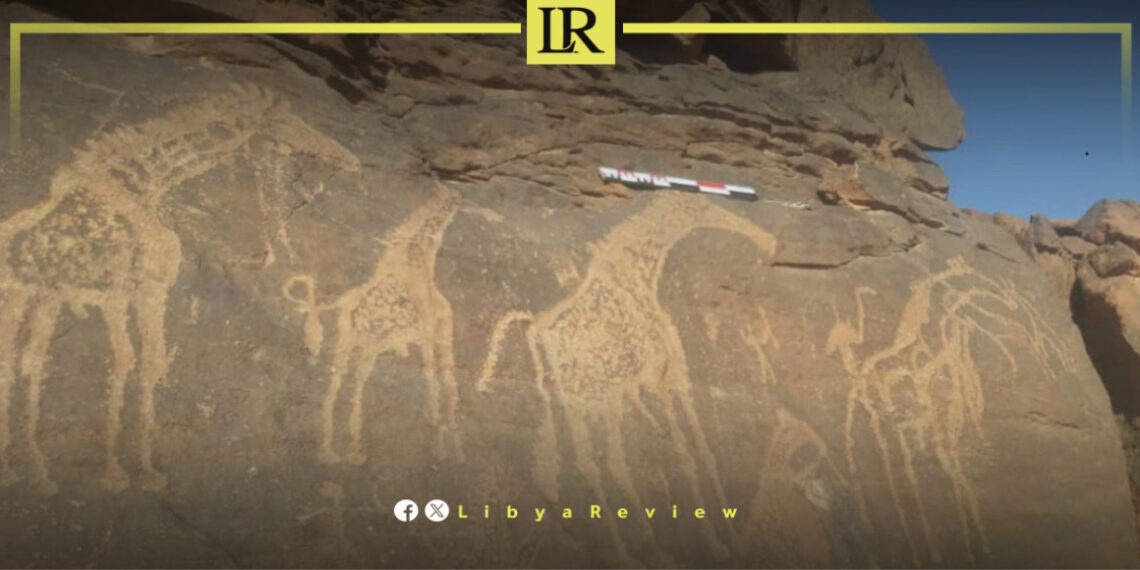Archaeologists in southern Libya have confirmed the discovery of prehistoric rock art believed to be up to 10,000 years old in the Al-Hasawna Mountains near Sebha. The engravings, initially reported by a local resident, are now drawing national attention due to their cultural and historical importance.
Experts from the Department of Antiquities and heritage specialists have since verified the site as a significant prehistoric landmark.
The engravings belong to multiple distinct periods of Saharan rock art identified across the Libyan desert. These include the Round Head, Buffalo, Horse, and Camel phases, each reflecting different eras of human settlement, climate conditions, and cultural evolution in the region.
Some of the carvings depict human figures with abstract, circular heads, a signature of the Round Head period, which dates from around 10,000 to 6,000 years ago.
Later imagery includes detailed depictions of cattle, horses, and camels, suggesting the progression of life in the Sahara from hunter-gatherer societies to pastoral and trade-based cultures.
The Southern Region Tourist Police and Antiquities Protection Agency have secured the area to prevent vandalism or looting while further studies are conducted. Authorities are also taking legal steps to classify the site as a protected cultural heritage zone.
Archaeologists believe the site offers rare insight into Libya’s deep prehistoric past and could become one of the country’s most important rock art locations. Despite years of conflict and neglect, Libya’s vast desert continues to yield discoveries that speak to its role as a cradle of Saharan civilization.
Officials emphasized that this discovery is not only about history, it is about cultural identity, education, and the importance of safeguarding Libya’s rich heritage for future generations.


